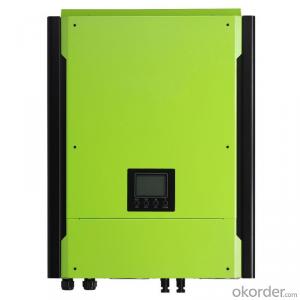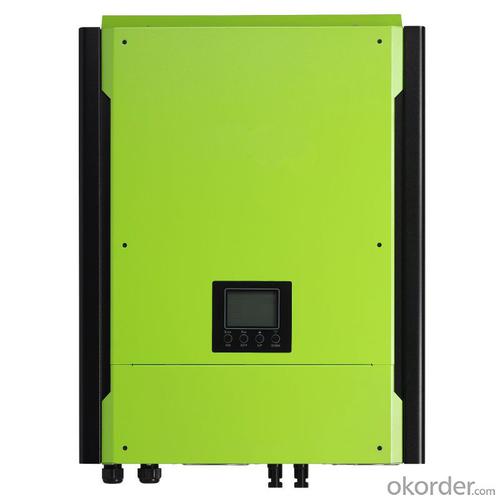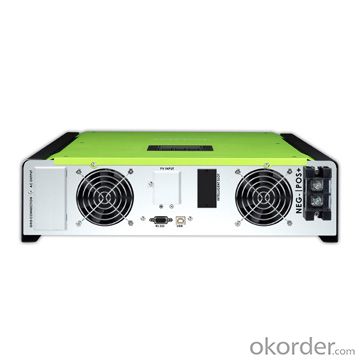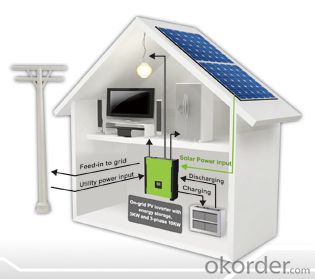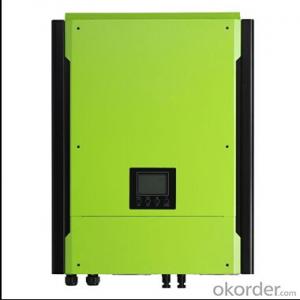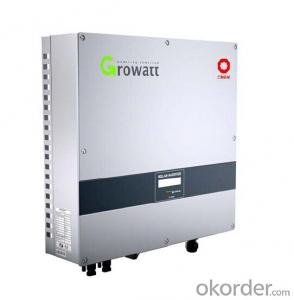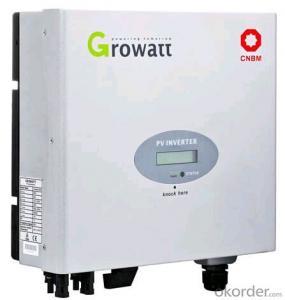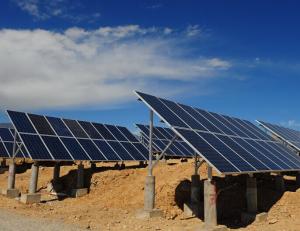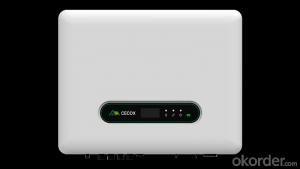Best Hybrid Solar Inverter - On-Grid Energy Storage PV Inverter PH500 Series 1-Phase 2kW-3kW Competitive Price
- Loading Port:
- China main port
- Payment Terms:
- TT OR LC
- Min Order Qty:
- 10 pc
- Supply Capability:
- 1000 pc/month
OKorder Service Pledge
OKorder Financial Service
You Might Also Like
Features:
. 2KW/3KW/5KW on-grid inverter with energy storage
. Pure sine wave output
. Microprocessor controlled to guarantee stable charging system
. Multiple operations: Grid tie, Off grid, and grid-tie with backup
. Built-in MPPT solar charger
. LCD display panel for comprehensive information
. Multiple communication
. Green substitution for generators
. User-adjustable battery charging current
On-grid PV Inverter with Energy Storage – PH500 3KW
| Model | PH500 Single-phase 2KW | PH500 Single-phase 3KW | |
| RATED POWER | 2000 W | 3000 W | |
| GRID-TIE OPERATION | |||
| PV INPUT (DC) | |||
| Maximum DC Power | 2250W | 3200W | |
| Nominal DC Voltage / Maximum DC Voltage | 300 VDC / 350 VDC | 360 VDC / 500 VDC | |
| Start-up Voltage / Initial Feeding Voltage | 80 VDC / 120 VDC | 116 VDC / 150 VDC | |
| MPP Voltage Range | 150 VDC ~ 320 VDC | 250 VDC ~ 450 VDC | |
| Number of MPP Trackers / Maximum Input Current | 1 / 1 x 15 A | 1 / 1 x 13 A | |
| GRID OUTPUT (AC) | |||
| Nominal Output Voltage | 101/110/120/127 VAC | 208/220/230/240 VAC | |
| Output Voltage Range | 88 - 127 VAC* | 184 - 264.5 VAC* | |
| Nominal Output Current | 18 A | 13.1 A* | |
| Power Factor | > 0.99 | ||
| EFFICIENCY | |||
| Maximum Conversion Efficiency (DC/AC) | 95% | 96% | |
| European Efficiency@ Vnominal | 94% | 95% | |
| OFF-GRID OPERATION | |||
| AC INPUT | |||
| AC Start-up Voltage/Auto Restart Voltage | 60 - 70 VAC / 85 VAC | 120 - 140 VAC / 180 VAC | |
| Acceptable Input Voltage Range | 85 - 130 VAC* | 170 - 280 VAC | |
| Number of MPP Trackers / Maximum Input Current | 30 A | 25 A | |
| PV INPUT (DC) | |||
| Maximum DC Voltage | 350 VDC | 500 VDC | |
| MPP Voltage Range | 150 VDC ~ 320 VDC | 250 VDC ~ 450 VDC | |
| Maximum Input Current | 1 / 1 x 15 A | 1 / 1 x 13 A | |
| BATTERY MODE OUTPUT (AC) | |||
| Nominal Output Voltage | 101/110/120/127 VAC | 208/220/230/240 VAC | |
| Output Waveform | Pure Sinewave | ||
| Efficiency (DC to AC) | 90% | 93% | |
| HYBRID OPERATION | |||
| PV INPUT (DC) | |||
| Nominal DC Voltage / Maximum DC Voltage | 300 VDC / 350 VDC | 360 VDC / 500 VDC | |
| Start-up Voltage / Initial Feeding Voltage | 80 VDC / 120 VDC | 116 VDC / 150 VDC | |
| MPP Voltage Range | 150 VDC ~ 320 VDC | 250 VDC ~ 450 VDC | |
| Maximum Input Current | 1 / 1 x 15 A | 1 / 1 x 13 A | |
| GRID OUTPUT (AC) | |||
| Nominal Output Voltage | 101/110/120/127 VAC | 208/220/230/240 VAC | |
| Output Voltage Range | 88-127 VAC | 184 - 264.5 VAC | |
| Nominal Output Current | 18 A | 13.1 A* | |
| AC INPUT | |||
| AC Start-up Voltage/Auto Restart Voltage | 60 - 70 VAC / 85 VAC | 120 - 140 VAC / 180 VAC | |
| Acceptable Input Voltage Range | 80 - 130 VAC* | 170 - 280 VAC | |
| Maximum AC Input Current | 30 A | 25 A | |
| BATTERY MODE OUTPUT (AC) | |||
| Nominal Output Voltage | 101/110/120/127 VAC | 208/220/230/240 VAC | |
| Efficiency (DC to AC) | 90% | 93% | |
| BATTERY & CHARGER | |||
| Nominal DC Voltage | 48 VDC | 48 VDC | |
| Maximum Charging Current | 25A | 25A | |
| GENERAL | |||
| PHYSICAL | |||
| Dimension, D x W x H (mm) | 420 x 415 x 170 | ||
| Net Weight (kgs) | 15.5 | ||
| INTERFACE | |||
| Communication Port | RS-232/USB | ||
| Intelligent Slot | Optional SNMP, Modbus, and AS-400 cards available | ||
| ENVIRONMENT | |||
| Humidity | 0 ~ 90% RH (No condensing) | ||
| Operating Temperature | 0 to 40°C | ||
| Altitude | 0 ~ 1000 m** | ||
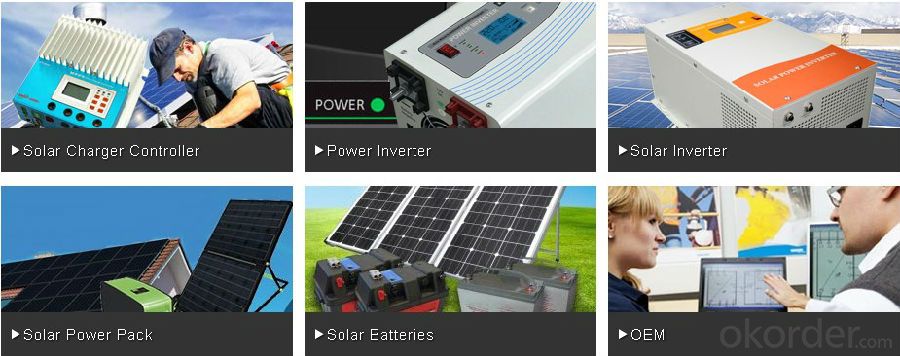
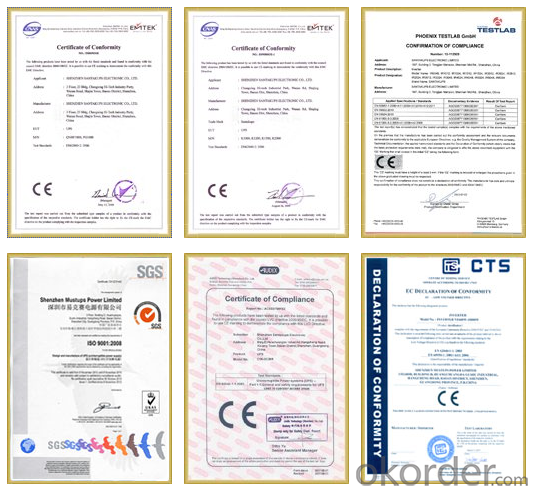
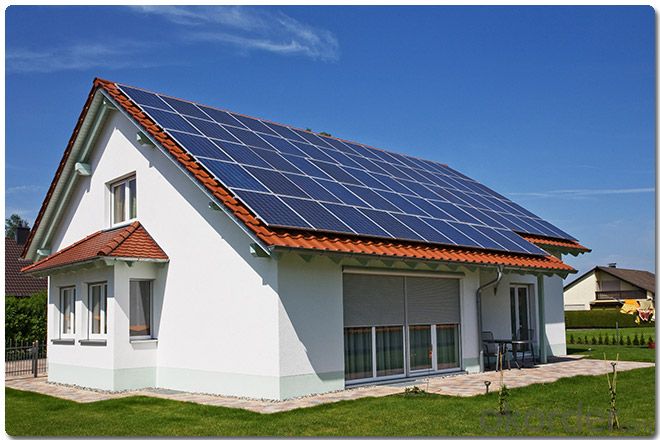
Warranty
provides a 1~3 year limited warranty (“Warranty”) against defects in materials and workmanship for its Uninterruptible power supply, Power inverter/chargers, Solar charge controllers, Battery Products (“Product”).
The term of this Warranty begins on the Product(s) initial purchase date, or the date of receipt of the Product(s) by the end user, whichever is later. This must be indicated on the invoice, bill of sale, and/or warranty registration card submitted to MUST-Solar. This Warranty applies to the original MUST-Solar Product purchaser, and is transferable only if the Product remains installed in the original use location.
FAQ
1. How do I decide which system is right for me ?
For protection from long outages, include a generator or solar panels in your Must solar system. Shorter outages can be handled by a battery-only system.
2. Where my system will be installed ?
Must solar systems are usually wall-mounted near a home's main electrical (circuit breaker) panel.
3. How do I install my system ?
A must solar backup inverter is connected to a home electric system , we will supply detailed installation manual and videos for our customers .
- Q: How do you connect a solar inverter to a data monitoring system?
- To connect a solar inverter to a data monitoring system, you need to follow a few steps. First, ensure that your inverter is compatible with the data monitoring system you intend to use. Then, connect the inverter to your local network using an Ethernet cable or wireless connection. Next, access the inverter's settings through a web interface or mobile app and enable data monitoring. Finally, input the necessary information, such as IP addresses or log-in credentials, into the data monitoring system to establish the connection between the inverter and the monitoring platform.
- Q: How do you choose the right size solar inverter for a specific solar power system?
- Choosing the right size solar inverter for a specific solar power system requires careful consideration of various factors. Here are some steps to help you make the right choice: 1. Determine your solar power system's capacity: Start by calculating the total capacity of your solar power system. This involves determining the total wattage of all your solar panels combined. This information can usually be found on the product specifications or by consulting with your solar panel manufacturer. 2. Consider your average energy consumption: Assess your average energy consumption to determine the size of the solar inverter needed to meet your requirements. Consider your peak power usage and any potential future increase in energy demands. 3. Evaluate the inverter's capacity: Match the capacity of the solar inverter with your solar power system's capacity. The inverter's capacity should be equal to or slightly higher than your system's total capacity to ensure optimal performance. 4. Consider the inverter's efficiency: Look for an inverter with high efficiency ratings. A higher efficiency rating means that it can convert a larger percentage of the solar energy into usable electricity, minimizing power losses. 5. Determine the inverter type: Decide on the type of solar inverter suitable for your system. There are three main types: string inverters, microinverters, and power optimizers. String inverters are the most common and cost-effective option for small to medium-sized systems, while microinverters and power optimizers are better suited for complex installations or systems with shading issues. 6. Assess the inverter's features: Consider additional features that the solar inverter may offer. Look for features such as monitoring capabilities, grid integration capabilities, and built-in safety features like arc fault protection or rapid shutdown. 7. Consult with professionals: If you are uncertain about the right size solar inverter for your specific solar power system, it is advisable to consult with a professional solar installer or an electrical engineer. They can help assess your energy needs, system requirements, and provide expert guidance on selecting the appropriate inverter size. Remember, choosing the right size solar inverter is crucial for the overall performance and efficiency of your solar power system. Taking the time to evaluate your system's requirements and seeking expert advice will help ensure you make an informed decision.
- Q: What is the maximum short-circuit current that a solar inverter can handle?
- The maximum short-circuit current that a solar inverter can handle varies depending on the specific model and design. However, most solar inverters are designed to handle short-circuit currents ranging from 500 Amps to 10,000 Amps, depending on the size and capacity of the inverter.
- Q: Can a solar inverter be used with solar-powered outdoor lighting?
- Yes, a solar inverter can be used with solar-powered outdoor lighting. The solar inverter is responsible for converting the direct current (DC) produced by the solar panels into alternating current (AC) that is suitable for powering outdoor lighting fixtures. By using a solar inverter, the solar energy collected during the day can be efficiently utilized to power outdoor lighting systems during the night.
- Q: How do I monitor the performance of a solar inverter?
- To monitor the performance of a solar inverter, you can follow these steps: 1. Install monitoring software: Many solar inverters come with monitoring software that allows you to track their performance. Install the software on a computer or mobile device for easy access. 2. Connect to the inverter: Use the provided cables or wireless connectivity options to establish a connection between the inverter and your monitoring system. Ensure that the connection is secure and stable. 3. Set up the monitoring system: Follow the instructions provided by the manufacturer to set up the monitoring system. This usually involves creating an account, connecting the inverter to your account, and configuring the monitoring settings. 4. Access the monitoring portal: Once your monitoring system is set up, access the manufacturer's monitoring portal either through a web browser or mobile app. Log in to your account using the credentials created during the setup process. 5. Monitor key performance parameters: Within the monitoring portal, you will find various performance parameters such as real-time power output, energy production, and conversion efficiency. Monitor these parameters to assess the overall performance of your solar inverter. 6. Analyze historical data: Most monitoring systems allow you to access historical data, which can help you identify trends and patterns in the inverter's performance over time. Analyze this data to spot any potential issues or variations in performance. 7. Set up alerts: Configure the monitoring system to send you alerts or notifications in case of any abnormalities or underperformance. This will help you address any issues promptly and ensure optimal performance of your solar inverter. Remember to consult the specific user manual or documentation provided by the manufacturer of your solar inverter for detailed instructions on monitoring its performance.
- Q: How does a solar inverter impact the overall system reliability?
- A solar inverter plays a crucial role in ensuring the overall system reliability of a solar power system. It converts the direct current (DC) generated by solar panels into alternating current (AC) that is suitable for use in homes or businesses. By efficiently converting the energy and maintaining optimal voltage and frequency levels, the inverter ensures that the system operates reliably and consistently. It also provides various protective functions, such as monitoring and controlling the system's performance, detecting faults or abnormalities, and shutting down the system in case of emergencies. Therefore, a well-functioning solar inverter significantly impacts the overall system reliability by maximizing energy production, preventing damage, and ensuring smooth operation.
- Q: Can a solar inverter be installed indoors or outdoors?
- A solar inverter can be installed both indoors and outdoors, depending on the specific requirements and preferences of the installation. However, it is essential to consider factors such as available space, ventilation, temperature regulation, and protection from environmental elements when deciding on the installation location.
- Q: Can a solar inverter be used with a portable solar panel system?
- Yes, a solar inverter can be used with a portable solar panel system. The solar inverter converts the direct current (DC) generated by the portable solar panels into alternating current (AC) that can be used to power various devices or be fed into the electrical grid. This allows for the efficient utilization of the energy generated by the portable solar panel system.
- Q: Generally a large grid-connected photovoltaic power plant will have several inverters
- Group is the use of a number of grid-connected inverter and grid-connected AC power grid, the advantage is the loss of small, low cost of the cable (because the PV cable is more expensive), eliminating the cost of the convergence box, and multiple
- Q: Can a solar inverter be used with energy storage systems?
- Yes, a solar inverter can be used with energy storage systems. In fact, integrating an energy storage system with a solar inverter allows for the efficient utilization and management of solar-generated electricity. The inverter not only converts the DC power from the solar panels into AC power but also controls the charging and discharging of the energy storage system, ensuring optimal usage of stored energy.
Send your message to us
Best Hybrid Solar Inverter - On-Grid Energy Storage PV Inverter PH500 Series 1-Phase 2kW-3kW Competitive Price
- Loading Port:
- China main port
- Payment Terms:
- TT OR LC
- Min Order Qty:
- 10 pc
- Supply Capability:
- 1000 pc/month
OKorder Service Pledge
OKorder Financial Service
Similar products
Hot products
Hot Searches
Related keywords
